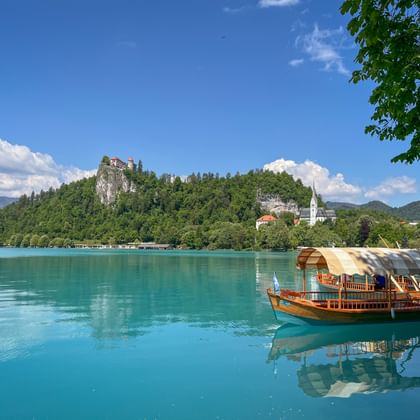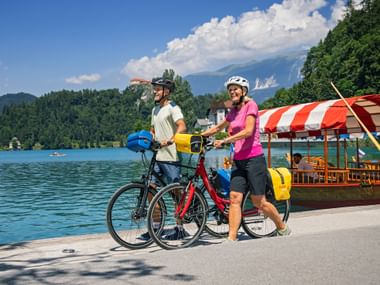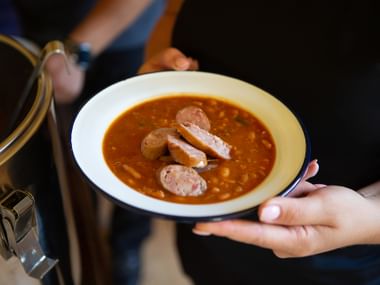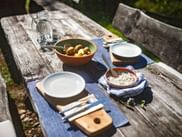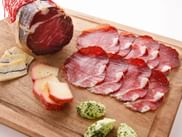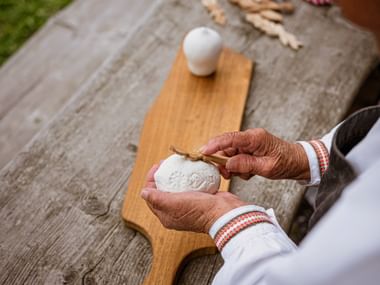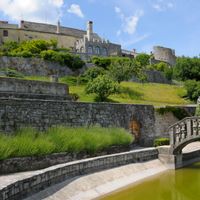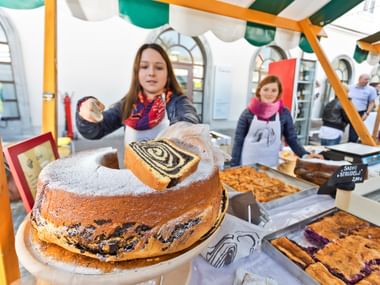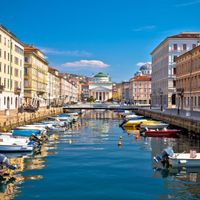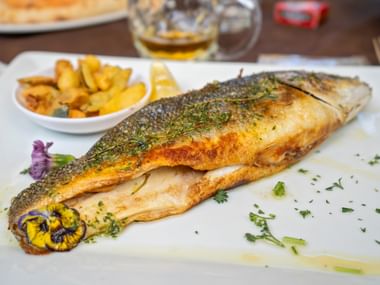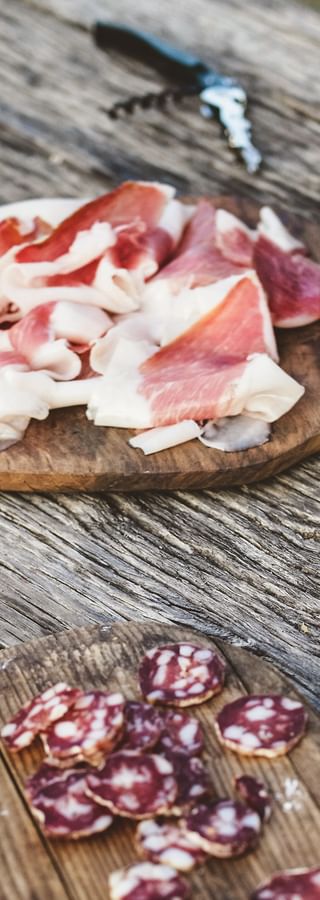The cuisine of Northern Slovenia is deeply rooted in alpine farming traditions. For centuries, cows, sheep, and goats have grazed on the expansive alpine pastures, making milk a key ingredient in many local dishes. The Soča Valley, in particular, is famous for its centuries-old cheese-making tradition. If you're cycling through Slovenia, be sure to try Bovški sir, a cheese typically made from pure sheep's milk, giving it a distinctive, aromatic, rich, and slightly spicy flavor. Another notable variety is Tolminc cheese, made from raw cow's milk and protected by a designation of origin. Interestingly, cheese was once used as currency in Slovenia, as documented in 13th-century records.
Next, let’s move on to another hearty delicacy: the Krainer sausage. Often referred to as the queen of sausages, it is made following a precise method that dates back to 1896. The sausage is especially delicious when made with meat from the local Krškopolje pig, known for its rich flavor.
A charming anecdote on the side: The sausage is said to have received its name from the Austro-Hungarian Emperor Franz Joseph. During his visit in 1883, he stopped at an inn where he was served a few sausages. They were so delicious that he named them "Krainer Sausages" after the region.
Slovenia also offers excellent fish. In the crystal-clear waters of the Soča River, the eponymous Soča trout thrives and is considered a delicacy. Traditionally, it is coated in buckwheat or corn flour and then fried. The trout is typically featured on the menus of top restaurants.

